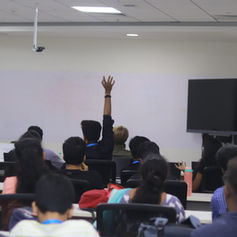Learning to think critically
- Nellaiappan K
- Jul 27, 2022
- 2 min read

Ever wondered what it means to ‘think’? Is it the same as observation? If it is not, how does it differ from it? The course on Critical Thinking explains it all. From the very basic understanding of the difference, we moved onto the different kinds of syllogisms and arguments, the fallacies in those arguments that one might encounter, cognitive biases, statistical and probabilistic reasoning, and the idea behind knowledge.
We learnt how to think and not what to think. How different is that to what we normally learn in classrooms! The interactive classes were a lot of fun. I tried to incorporate the ideas that I learnt in class in my everyday life. Initially, it was just me pointing out the fallacies in others’ arguments, but over a period of time, I noticed a change in my way of thinking. I have become an active’ thinker. I now do not consume information passively, without verifying the source and without checking the validity and soundness of every argument. And what’s more, I am now conscious of my own biases and judgements that are based on them.
The Critical Thinking course has helped me a great deal in making informed decisions. In this age of information overload, it is hard not to fall prey to misinformation. This course has led me to pause, to take a step back, and gather perspective before arriving at a decision.
The applications of critical thinking are not limited to the classroom. It is a course that equips one with the skills to handle challenging situations with equanimity. Be it a discussion in class or an intercollege debate competition, be it choosing the right candidate to vote for in an election, or handling a tricky court case, critical thinking helps one in preparing to navigate the tricky landscape. With data science and analytics being the next big thing on the horizon, ‘critical thinking’ becomes a necessity, and not an option.











Comments